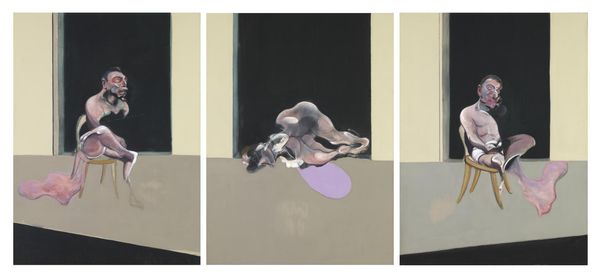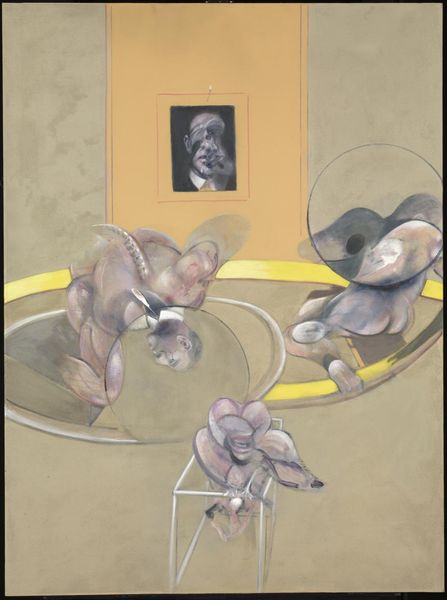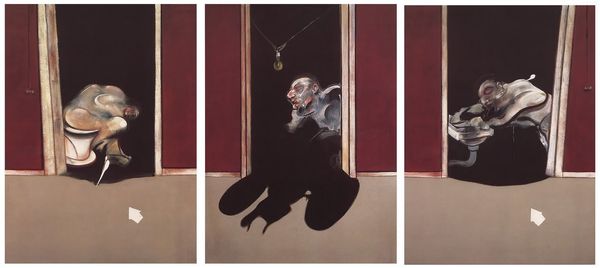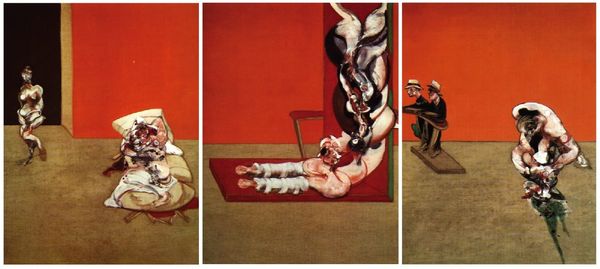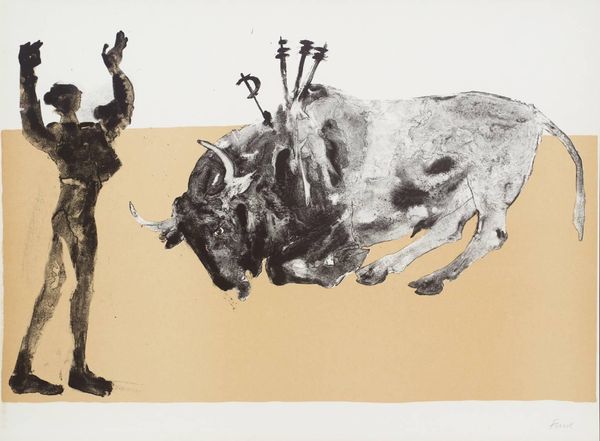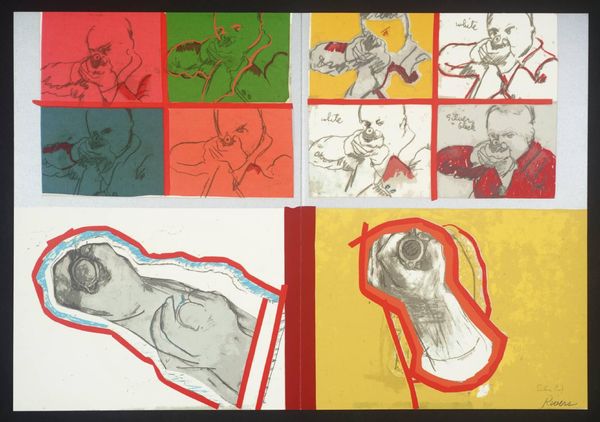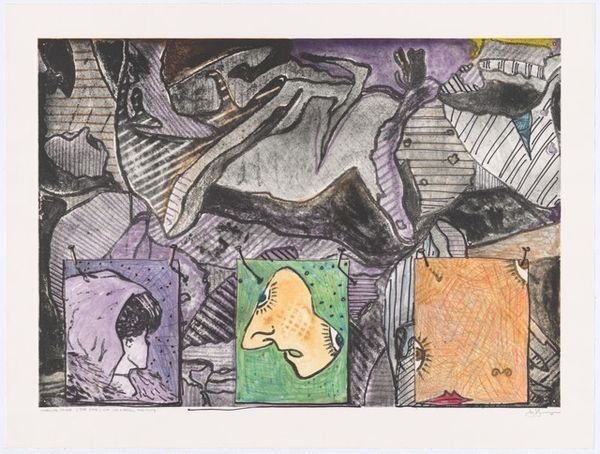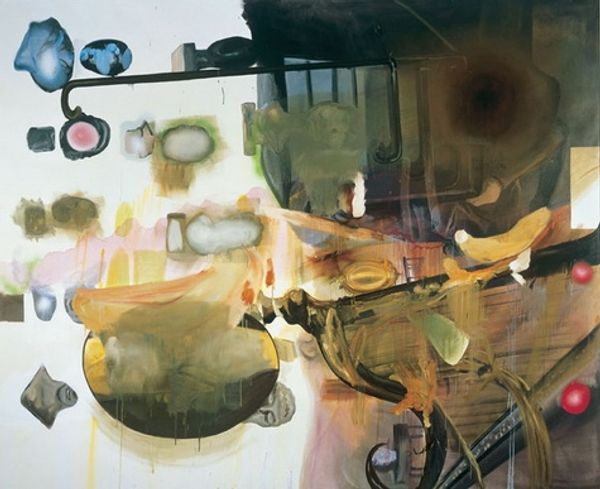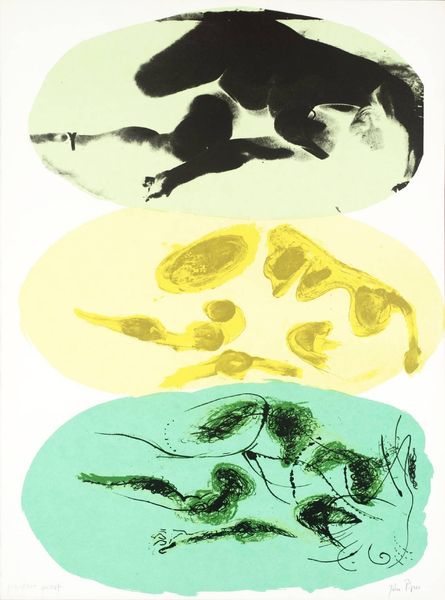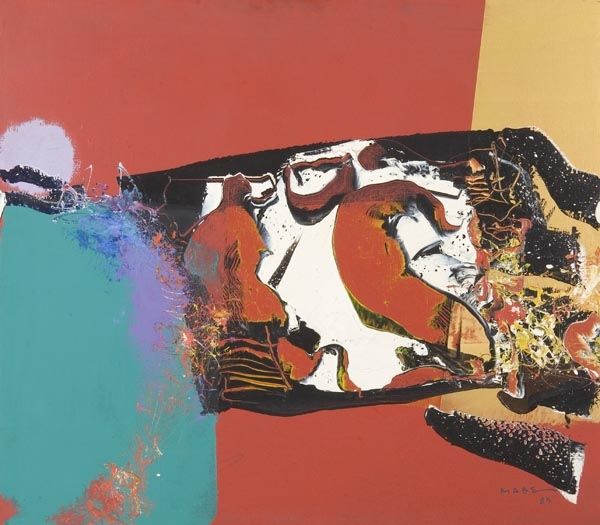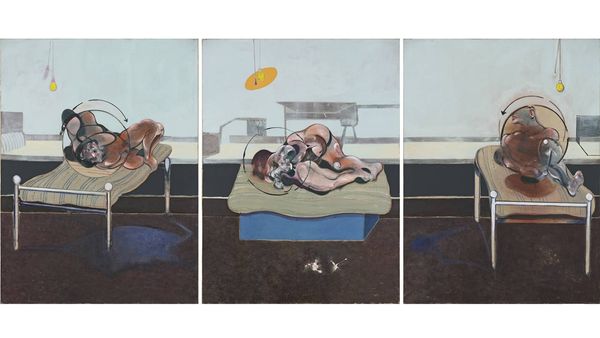
Copyright: Francis Bacon,Fair Use
Curator: Francis Bacon’s *Triptych – Studies from the Human Body*, completed in 1970 using oil paint, is an evocative piece in our collection. What's your immediate take? Editor: Viscerally unsettling. The ochre background is surprisingly cheerful given the… disjointed figures. The brushwork is frantic. Curator: The use of a triptych format is interesting here. Triptychs, of course, historically served a sacred function, often as altarpieces. By employing that structure, Bacon imbues his very secular, very tortured subject matter with a certain...grandeur, perhaps? It emphasizes a cycle. He was really interested in the post-war human condition. Editor: Perhaps "grandeur" is a bit strong. The raw materiality of the paint itself betrays that. It’s applied with such brutality in places, scrubbed and smeared. Look at the panel on the left; see the way the figure seems to be fighting its way out of the canvas? One can consider the labor in the production, a response to trauma after two World Wars and a nuclear bomb; Bacon lived through incredibly difficult conditions, and painted in a world where his art was also controversial. Curator: I agree there's a palpable sense of struggle and the material handling is far from reverent. However, that tension is key. It creates a compelling contrast—the inherent classicism of the triptych fighting with the violently modern subject. The colour too plays that role. A bold ochre background and bursts of vivid greens that recall sickly flesh. Editor: There's also the motif of isolation, emphasized by those crude chair-like forms in each panel. It recalls the spaces between and boundaries found with the self. Are we to interpret these frames as the confines of the human condition? Curator: A potent thought, reflecting his own social anxieties about class and background and place. These figures certainly feel trapped, wrestling against an unseen force that perhaps is within themselves. They’re reflections, fractured but undeniably human. And if we follow through with the triptych as representing time: birth, death and purgatory perhaps? Editor: I am very struck, always, by how the materials are used in such an active way as part of Bacon's larger commentary. Curator: Bacon truly captures the anxieties of existing. An artwork worth meditating upon.
Comments
No comments
Be the first to comment and join the conversation on the ultimate creative platform.
